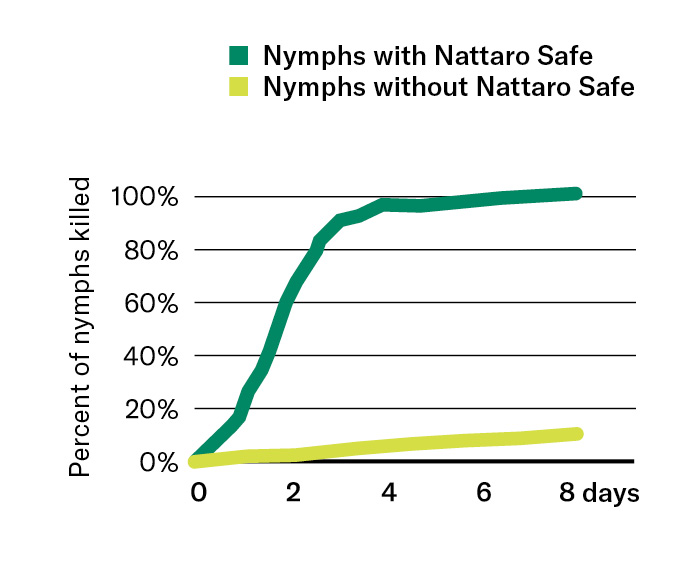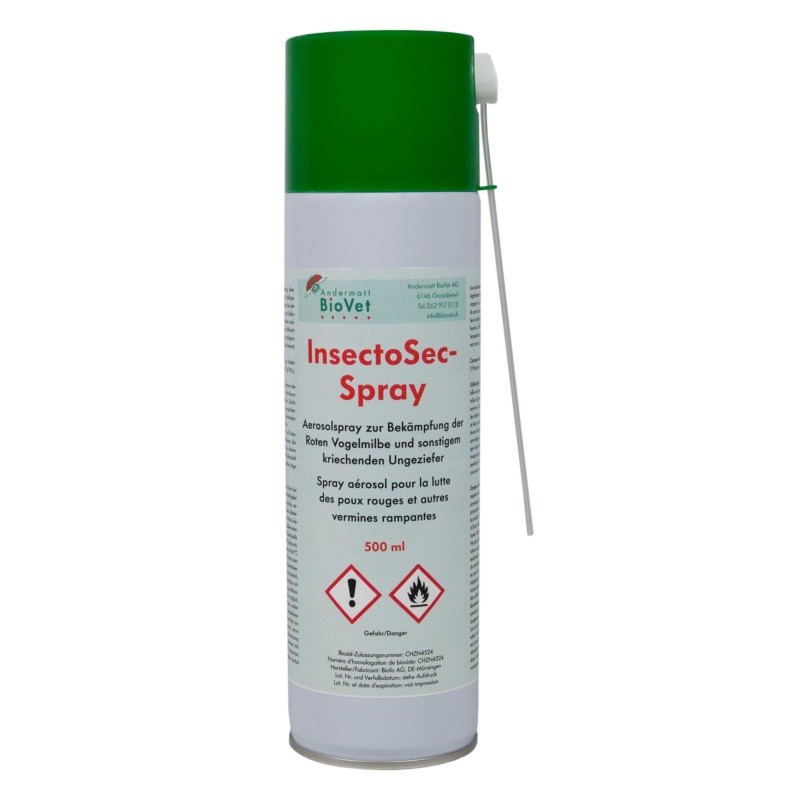Control with diatomaceous earth
Diatomaceous earth is a powder made from fossilised diatoms. The tiny, sharp-edged particles damage the insect skin on contact, causing it to dry out. InsectoSec from Andermatt Biocontrol is a high-purity diatomaceous earth of tested quality and is authorised as a biocide in Switzerland. In combination with thermal applications or carbon dioxide processes, it is a biological alternative to chemical control methods. InsectoSec products are sufficient as the only measure for low infestations and for prevention.
Andermatt strategy
If a bedbug infestation is dealt with quickly, the still small population can be eliminated with a comprehensive strategy.
Since spring 2019, the products InsectoSec and Nattaro Safe have been authorised as biocides in Switzerland and can be used for bedbug control. Andermatt’s products enable the use of an efficient, biological and verifiable strategy that also includes long-term protection.
The holistic strategy against bedbugs consists of four steps:
1. Thorough cleaning
The first step is to wash all bedding in hot water (60°C). The mattress and bed frame should be thoroughly searched, every crevice vacuumed and thoroughly cleaned. The rest of the room should also be intensively cleaned and especially cracks, skirting boards and socket covers should be vacuumed thoroughly. Dispose of the hoover bag immediately afterwards in a tightly closing plastic bag.
2. Nattaro Safe on the bed
The adhesive tape is attached to the inside of the bed. The paper flap is an attractive hiding place for bedbugs. After being bitten, the bugs seek out this hiding place, come into contact with diatomaceous earth and dry out. The active ingredient remains active as long as it remains dry and in the paper flap. Take care not to move the tape when cleaning and bedding. Nattaro Safe offers long-term protection for at least one year.

3. InsectoSec spray in cracks
The bedbugs’ favourite retreats, such as cracks in the bed frame, crevices in furniture, floors and ceilings, behind skirting boards, decorative strips and covers on sockets, are treated with InsectoSec spray. In the case of heavy infestations, the places where the bugs live in the bed should also be treated with InsectoSec after the animals have been vacuumed out. The spray allows application in inaccessible places and prevents dust formation. When bedbugs visit the treated areas, they come into contact with the active ingredient and dry up within a few days.
After application, excess product around the treatment areas can be wiped away with a damp cloth. When vacuuming, ensure that the product is not removed again.
4. Nattaro Scout for monitoring
To monitor the success of the control measures, traps are placed in two places by the bed – preferably at the head end under the mattress. The trap is fitted with a pheromone bait that is attractive to female and male bedbugs at all stages of development. Regular checks can be carried out to monitor the progress of the control measure. The bed bug control checklist guides you through a thorough control programme.

Non-chemical control
Bedbugs can also be killed by heat. Clothes can be washed in hot water (60°C) to kill the parasites. Professional electric heat ovens are used for entire rooms. A temperature of 50-60°C is maintained for two days to kill the bedbugs. Another option is fumigation with carbon dioxide. The lack of oxygen kills bed bugs and their eggs. These methods are indicated for heavy infestations. However, they are expensive and have no long-term effect against migrating bed bugs.
Chemical control
A number of different chemical agents can be used to control bed bugs, but this should be done by professional pest controllers. The main disadvantage of chemical control is that the substances it contains are often harmful to humans and pets. In addition, bedbugs have already developed resistance to some of the chemical agents. The private use of chemical-based insect sprays therefore often does not have the desired effect and can also cause the bedbugs to move to other rooms or flats.

